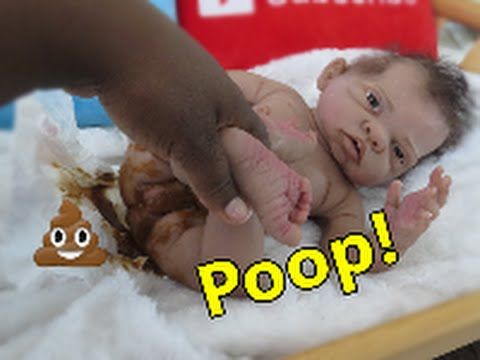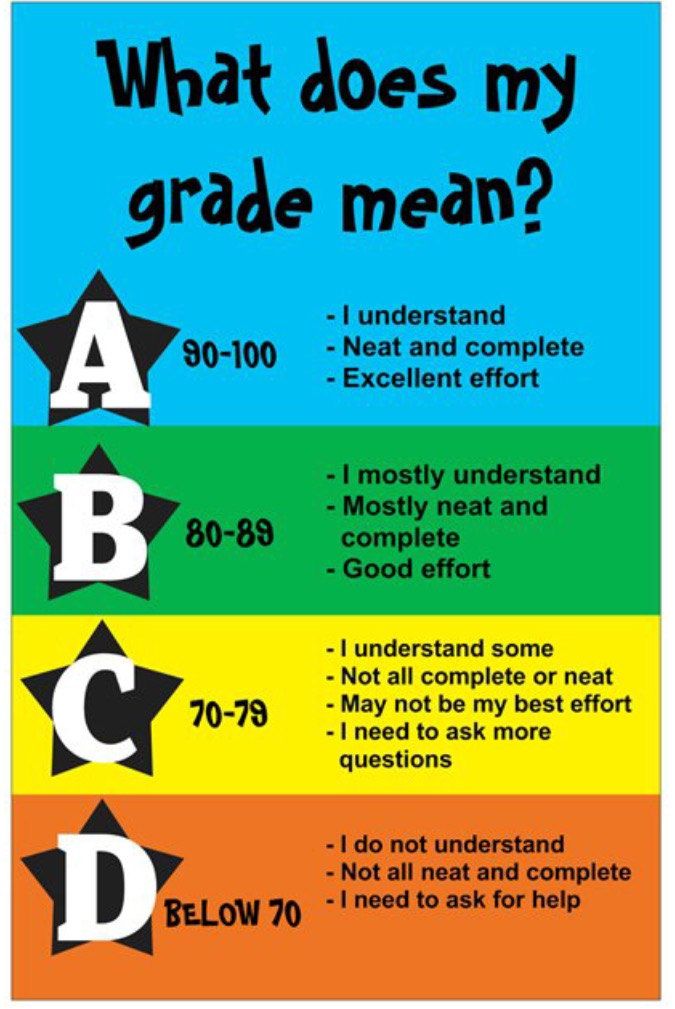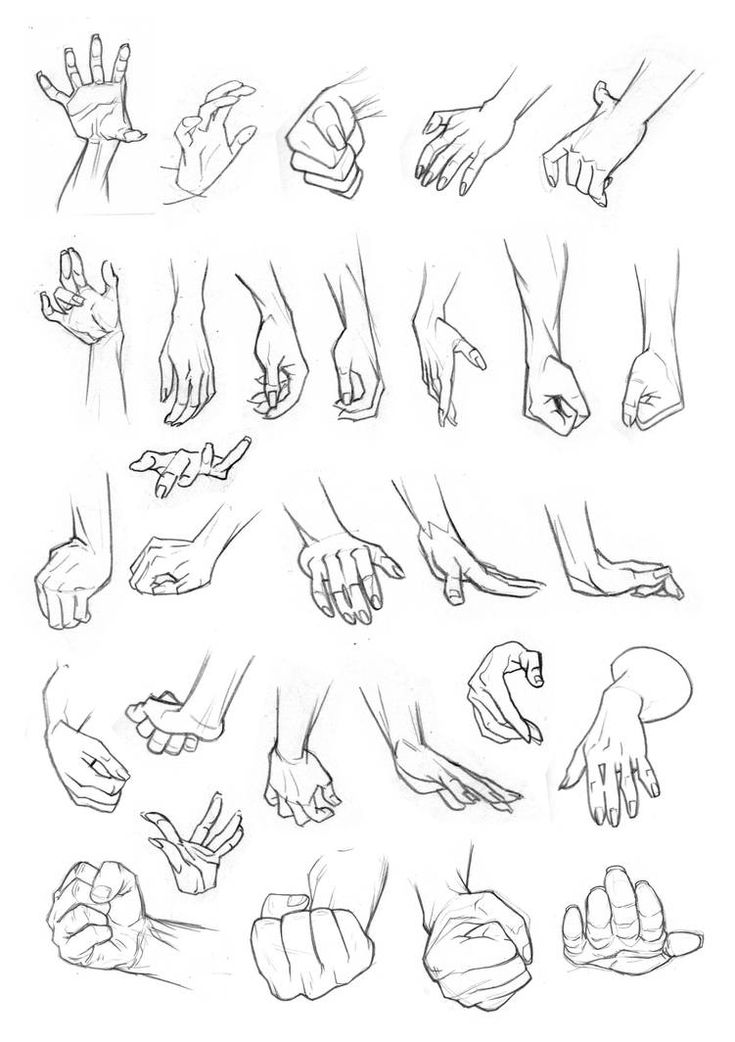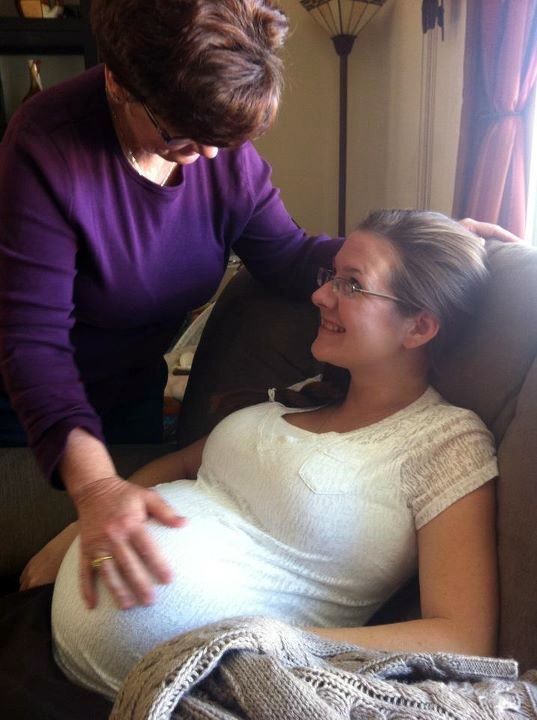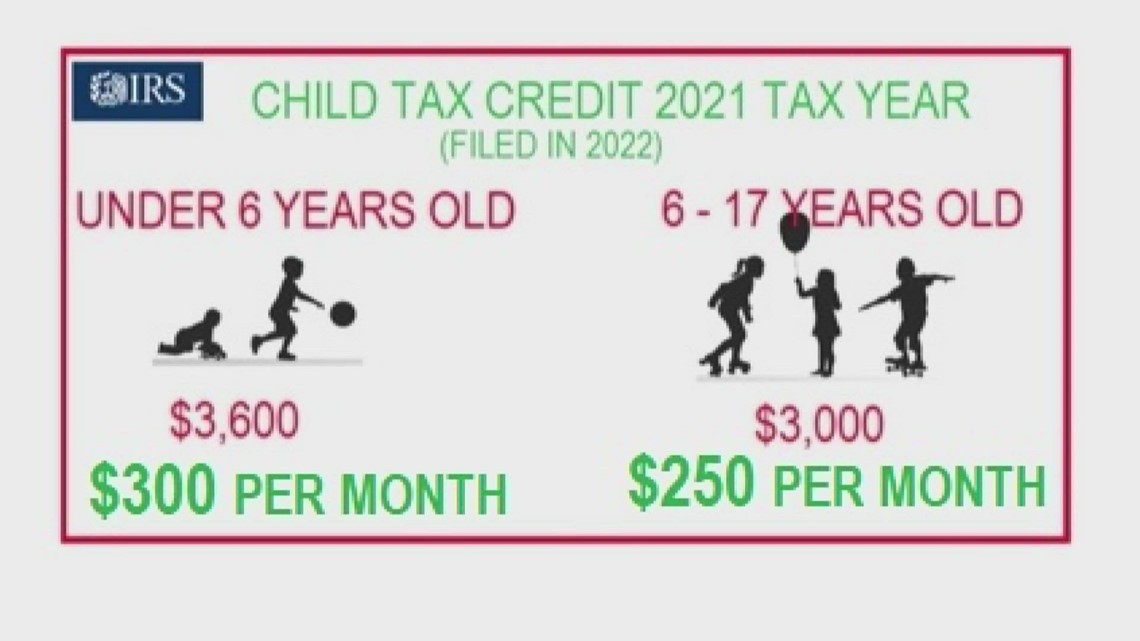My baby struggles to poop
Constipation
Is this your child's symptom?
- Can't pass a stool or pain when passing a stool
- Crying when passing a stool (bowel movement or BM) or
- Can't pass a stool after straining or pushing longer than 10 minutes or
- 3 or more days without passing a stool (Exception: Breastfed and over 1 month old)
- Caution: any belly pain from constipation comes and goes. Most often, it is mild. Use the Abdominal Pain (Stomach Pain) care guide if there is constant belly pain.
Causes of Constipation
- High Milk Diet. Milk and cheese are the only foods that in high amounts can cause constipation. It causes hard pale stools. This is why you want your child to eat a well-balanced diet.
- Low Fiber Diet. Fiber is found in vegetables, fruits and whole grains. Fiber keeps stools soft, bulky and easy to pass. A low fiber diet causes hard, small stools.
- Low Fluid Intake. This can also cause stools to be dry and harder to pass.
It's rarely the only cause of constipation.
- Lack of Exercise. Exercise also keeps the bowel from slowing down. Not a cause in children unless they are confined to bed.
- Holding Back Stools Because of Pain. If passing a stool causes pain, many children will hold back the next one. This can happen with a Strep infection around the anus. It can also occur with a bad diaper rash or anal fissure (tear).
- Holding Back Stools Because of Power Struggles. This is the most common cause of recurrent constipation in children. Most often it's a battle around toilet training. If they are already trained, it may begin with the start of school. Reason: some children refuse to use public toilets. Some children postpone stools because they are too busy to sit down.
- Slow passage of food through the intestines. Most often, this type runs in families. Called slow transit time.
Stools: How Often is Normal?
- Normal Range: 3 per day to 1 every 2 days.
 Once children are on normal table foods, their stool pattern is like adults.
Once children are on normal table foods, their stool pattern is like adults. - Kids who go every 4 or 5 days almost always have pain with passage. They also have a lot of straining.
- Kids who go every 3 days often drift into longer times. Then, they also develop symptoms.
- Passing a stool should be free of pain.
- Any child with pain during stool passage or lots of straining needs treatment. At the very least, the child should be treated with changes in diet.
Imitators of Constipation: Normal Patterns and Stools
- Breastfed and Over 1 Month Old. Stools every 4-7 days that are soft, large and pain-free can be normal. Caution: before 1 month old, not stooling enough can mean not getting enough breast milk.
- Straining in Babies. Grunting or straining while pushing out a stool is normal in young babies. They are learning to relax their anus after 9 months of keeping it closed. It's also hard to pass stool lying on their back with no help from gravity.
 Babies also become red in the face and draw up their legs during straining. This is normal. Key: they continue to pass normal size stools every day. Just not every time they have some straining.
Babies also become red in the face and draw up their legs during straining. This is normal. Key: they continue to pass normal size stools every day. Just not every time they have some straining. - Brief straining under 10 minutes can occur at times at any age.
- Large Stools. Size relates to the amount of food eaten. Large eaters have larger stools.
- Hard or Dry Stools. Also can be normal if passed easily without too much straining. Often, this relates to poor fiber intake. Some children even have small, dry rabbit-pellet-like stools.
When to Call for Constipation
Call Doctor or Seek Care Now
- Stomach pain goes on more than 1 hour (includes crying) after using care advice
- Rectal pain goes on more than 1 hour (includes straining) after using care advice
- Vomits 2 or more times and stomach looks more swollen than normal
- Age less than 1 month old and breastfed
- Age less than 12 months with recent onset of weak suck or weak muscles
- Your child looks or acts very sick
- You think your child needs to be seen, and the problem is urgent
Contact Doctor Within 24 Hours
- Age less than 2 months.
 Exception: normal straining and grunting.
Exception: normal straining and grunting. - Bleeding from anus
- Needs to pass a stool but afraid to or refuses to let it out
- Child may be "blocked up"
- Suppository or enema was given but did not work
- You think your child needs to be seen, but the problem is not urgent
Contact Doctor During Office Hours
- Leaking stool
- Suppository or enema was needed to get the stool out
- Infrequent stools do not get better after changes to diet. Exception: normal if breastfed infant more than 1 month old and stools are not painful.
- Stool softeners are being used and have not been discussed with your doctor
- Toilet training is in progress
- Painful stools occur 3 or more times after changes to diet
- Constipation is a frequent problem
- You have other questions or concerns
Self Care at Home
- Mild constipation
Seattle Children's Urgent Care Locations
If your child’s illness or injury is life-threatening, call 911.
- Bellevue
- Everett
- Federal Way
- Seattle
Care Advice for Constipation
- What You Should Know about Constipation:
- Constipation is common in children.
- Most often, it's from a change in diet. It can also be caused by waiting too long to stool.
- Passing a stool should be pleasant and free of pain.
- Any child with pain during stool passage or lots of straining needs treatment. At the very least, they need changes in diet.

- Here is some care advice that should help.
- Normal Stools:
- Normal range: 3 per day to 1 every 2 days. Once children are on a regular diet, their stool pattern is like adults.
- Kids who go every 3 days often drift into longer times. Then symptoms start.
- Kids who go every 4 and 5 days almost always have pain with passage. They also have lots of straining.
- Diet for Infants Under 1 Year Old:
- Age over 1 month old only on breast milk or formula, add fruit juice.
- Amount. Give 1 ounce (30 mL) per month of age per day. Limit amount to 4 ounces (120 mL).
- Pear and apple juice are good choices. After 3 months, can use prune (plum) juice. Reason for fruit juice: approved for babies in treating a symptom.
- Age over 4 months old, also add baby foods with high fiber. Do this twice a day. Examples are peas, beans, apricots, prunes, peaches, pears, or plums.
- Age over 8 months old on finger foods, add cereals and small pieces of fresh fruit.
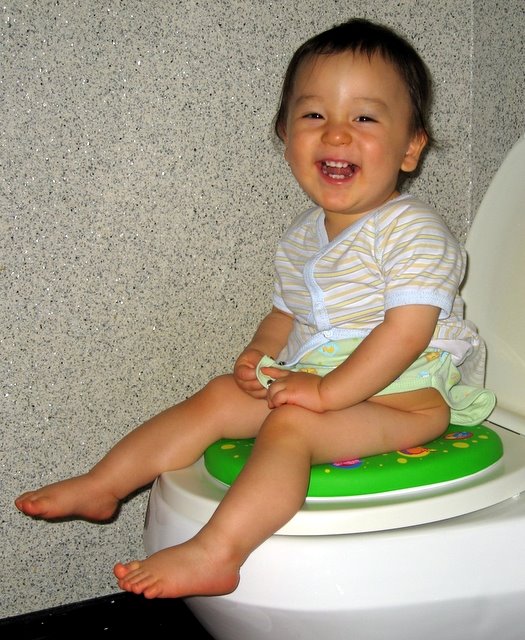
- Diet for Children Over 1 Year Old:
- Increase fruit juice (apple, pear, cherry, grape, prune). Note: citrus fruit juices are not helpful.
- Add fruits and vegetables high in fiber content. Examples are peas, beans, broccoli, bananas, apricots, peaches, pears, figs, prunes, or dates. Offer these foods 3 or more times per day.
- Increase whole grain foods. Examples are bran flakes or muffins, graham crackers, and oatmeal. Brown rice and whole wheat bread are also helpful. Popcorn can be used if over 4 years old.
- Limit milk products (milk, ice cream, cheese, yogurt) to 3 servings per day.
- Fluids. Give enough fluids to stay well-hydrated. Reason: keep the stool soft.
- Stop Toilet Training:
- Put your child back in diapers or pull-ups for a short time.
- Tell him that the poops won't hurt when they come out.
- Praise him for passing poops into a diaper.
- Holding back stools is harmful.
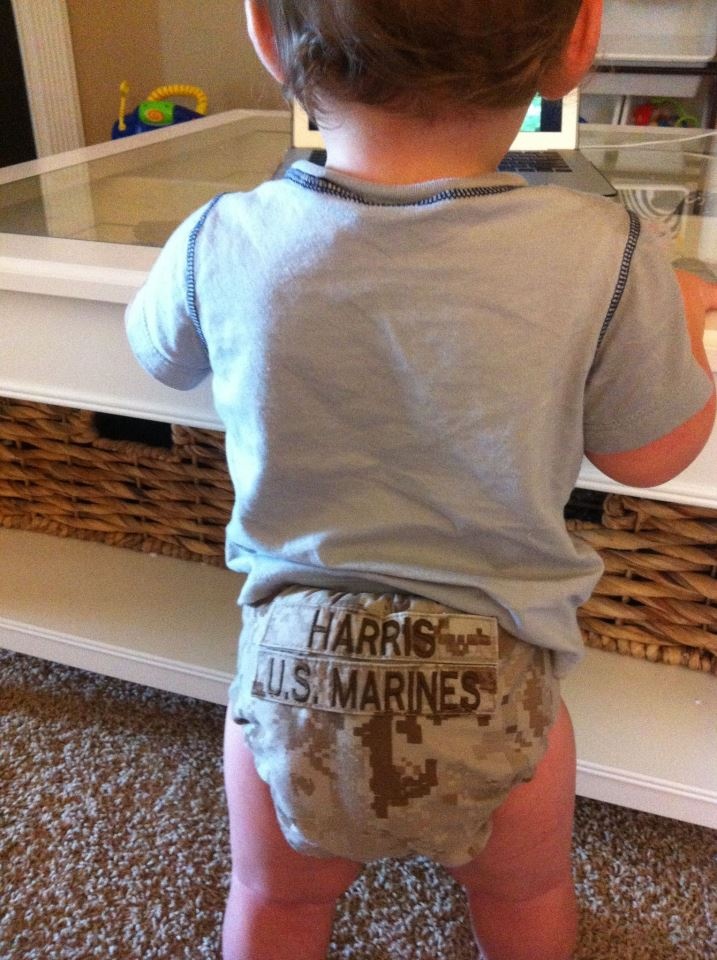 Use rewards to help your child give up this bad habit.
Use rewards to help your child give up this bad habit. - Avoid any pressure or punishment. Also, never force your child to sit on the potty against his will. Reason: it will cause a power struggle.
- Treats and hugs always work better.
- Encourage Sitting on the Toilet (if toilet trained):
- Set up a normal stool routine, if your child agrees to sitting.
- Have your child sit on the toilet for 5 minutes after meals.
- This is especially important after breakfast.
- If you see your child holding back a stool, also take to the toilet for a sit (if cooperates).
- During sits, stay with your child and be a coach. Just focus on helping the poop come out.
- Do not distract your child. Do not allow your child to play with video devices, games or books during sits.
- Once he passes a normal size stool, he doesn't need to sit anymore that day.
- Warm Water to Relax the Anus:
- Warmth helps many children relax the anus and release a stool.

- For straining too long, have your child sit in warm water.
- You can also put a warm wet cotton ball on the anus. Vibrate it side to side for about 10 seconds to help relax the anus.
- Warmth helps many children relax the anus and release a stool.
- Flexed Position to Help Stool Release for Babies:
- Help your baby by holding the knees against the chest. This is like squatting for your baby. This is the natural position for pushing out a stool. It's hard to have a stool lying down.
- Gently pump on the lower belly with your fingers. If no stool release in a few minutes, stop.
- Squatting Position to Help Stool Release for Older Children:
- The squatting position gives faster stool release and less straining.
- Squatting means that the knees are above the hips.
- For most children who sit on the toilet, a foot stool is needed.
- It is an important part of treating constipation.
- Stool Softeners (Age Over 1 Year Old):
- If a change in diet doesn't help, you can add a stool softener.
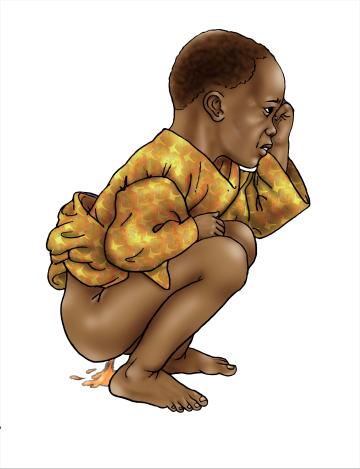 Must be over 1 year of age.
Must be over 1 year of age. - Use a stool softener (such as Miralax). It is available without a prescription. Give 1-3 teaspoons (5-15 mL) powder each day with dinner. Mix the powder in 2 to 6 ounces (60-180 mL) of water.
- Fiber products (such as Benefiber) are also helpful. Give 1 teaspoon (5 mL) twice a day. Mix it in 2 ounces (60 mL) of water or fruit juice.
- Stool softeners and fiber should produce regular soft stools in 1 to 3 days.
- Discuss dosage and how long to use with your doctor.
- If a change in diet doesn't help, you can add a stool softener.
- What to Expect:
- Most often, changes in diet helps constipation.
- After your child is better, be sure to keep him on high fiber foods.
- Also, have your child sit on the toilet at the same time each day.
- These tips will help to prevent the symptoms from coming back.
- Call Your Doctor If:
- Constipation lasts more than 1 week after making changes to diet
- You think your child needs to be seen
- Your child becomes worse
And remember, contact your doctor if your child develops any of the 'Call Your Doctor' symptoms.

Disclaimer: this health information is for educational purposes only. You, the reader, assume full responsibility for how you choose to use it.
Last Reviewed: 10/28/2022
Last Revised: 09/18/2022
Copyright 2000-2022. Schmitt Pediatric Guidelines LLC.
Symptoms, Treatment and When to Call a Doctor
Nationwide Children’s Hospital
Constipation (con-sta-PA-shun) in infants can worry parents. Most of the time, your baby is not really constipated. They may not have developed a routine for pooping yet. Some babies do not develop a bowel movement (BM) pattern for a while.
An infant’s BM pattern can change if their diet changes, like switching from breastmilk to formula, starting solid foods, or drinking less formula than usual. If your baby’s stool (poop) is not soft or easily passed, then they may be constipated.
In rare cases, constipation may be caused by a lack of nerves going to the intestines or by a problem with the way the intestine formed at birth. Your baby can be tested for these conditions if your health care provider feels it is needed.
Your baby can be tested for these conditions if your health care provider feels it is needed.
Signs of Constipation
- less stools than their usual pattern
- straining more than normal to have a bowel movement
- a change in how the stool looks from soft and mushy to:
- small, hard pebbles, or like a large, round golf ball
- loose and watery
- abdomen (belly) bloated or swollen with gas
- painful cramps
Treatment
- If your baby is not eating baby food yet, you may give 1 to 2 ounces of 100% fruit juice (pear, prune, cherry, or apple) once a day. Stop the juice if their stools become too loose.
- If they are old enough to eat baby foods, feed them pureed pears, peaches, or prunes instead of giving them juice.
- If your baby eats cereal, it may help to give oatmeal, wheat, or barley cereal. Rice cereal can cause constipation in some children.
- Sometimes giving your baby a warm bath to relax them or exercising their legs, like riding a bicycle, will help stimulate the bowels to move (Picture 1).

- If it has been a few days since your baby has pooped and the juice or pureed food has not worked, then you can try a glycerin suppository. Place your baby on their back. Gently push the suppository into their anus (bottom). Suppositories are meant for occasional use.
- Contact your baby’s health care provider before giving them laxatives, baby mineral oil, or enemas to treat constipation.
Medical Therapy
Your child’s health care provider may order the following treatments:
- Give your child medication.
- Check your child’s temperature using a digital, rectal thermometer. Put a small amount of petroleum jelly (Vaseline®) on its tip before inserting into the rectum. Taking a rectal temperature may stimulate the baby to pass stool.
When to Call the Health Care Provider
Call the health care provider if any of the following occurs:
- Your baby is irritable and seems to be having stomach pain. Infants will pull their legs up to their stomach and cry when they are in pain.
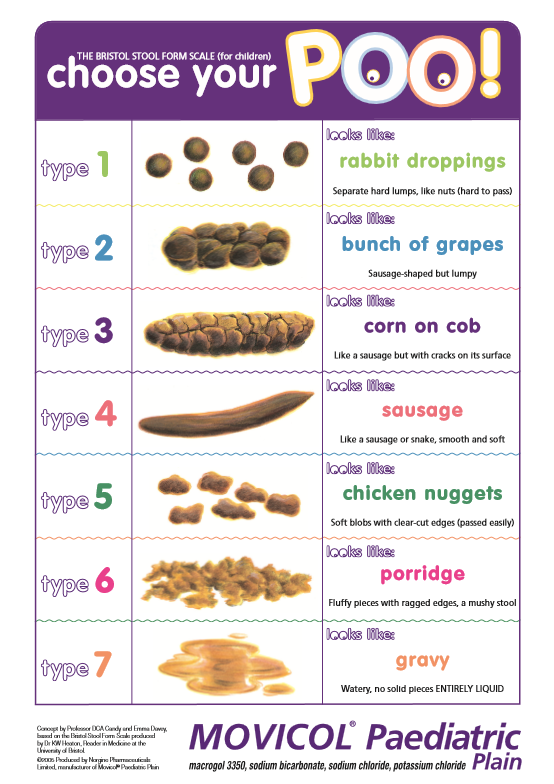
- Your baby has constipation and develops vomiting, and their belly looks like it is bloated or filled with gas.
- You see blood in their stool.
- Their constipation does not get better with treatment.
If you have any questions or concerns, call your baby’s health care provider.
Constipation: Infant (PDF), Spanish (PDF), Somali (PDF), Arabic (PDF), Nepali (PDF)
HH-I-14 ©Copyright 1984, Revised 2022, Nationwide Children’s Hospital
You Might Also Be Interested In
Blog
Pelvic Floor Physical Therapy: How It Can Help
Podcast
PediaCast 503 Your Childs Stomach Part 1
Blog
Senna-Based Laxatives for Kids’ Constipation: Are They Safe?
The child is afraid to poop | What to do if the child is afraid to poop
All articles
Children05/01/2019
I even got the hang of walking with a candle in the anus. ”
”
“Dasha walks mostly only in shorts. I think I've tried everything: explanations, games, books. It all started when she was 3 years old, and I began to catch her and put her on the potty. A cry rises, as if they are cutting her - they are killing her: “The pot is terrible!” After such attempts, the daughter does not poop for three days. I let go of the situation for a month, I try again and I understand that I will soon turn gray from her scream. Is there a way out of this impasse?”
There are many such situations. Children who are constipated may develop a fear of defecation, further exacerbating the problem. In addition, the situation is often accompanied by increased anxiety. How to break this vicious circle? An analysis of the causes and working recommendations are further down the course.
. Someone refuses to defecate in the right place, because he is afraid of what happens to him and what can be seen later. It is in our nature to fear the incomprehensible, the new.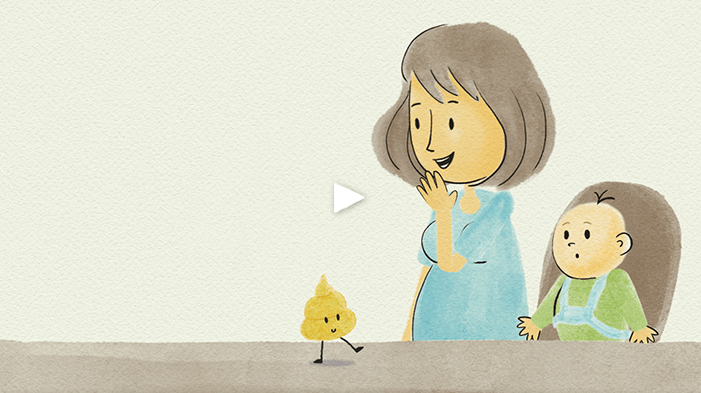 And a child at 2 years old is just beginning to realize himself, to recognize his body along with its functions.
And a child at 2 years old is just beginning to realize himself, to recognize his body along with its functions.
Some people are afraid of the toilet articles, they think that they are dangerous, how can you make friends with “those”?!
Some people are afraid of the process of defecation, often for physiological reasons: it hurts, it hurts, it presses... And when the baby still piles into his pants, then instead of a victorious “Hurrah! Everything worked out!” he receives a portion of adult discontent.
A lot of negative things happen with regular suppression of bowel movements:
-
thickening of the feces (megacolon), which will subsequently cause severe discomfort during the inevitable evacuation from the intestines
-
stretching of the walls of the rectum. It entails the absence of emptying signals. Treated surgically.
-
absorption of toxins from the rectum into the blood, which is essentially self-poisoning.

-
loss of bowel sensation, which over time can lead to incontinence.
With constipation that has become a habit, parents and doctors note a decrease in immunity (frequent SARS), nausea or vomiting, headaches, a rash in the buttocks or on the forehead and temples. For preschoolers - at 5 years old, at 6 years old - and even schoolchildren, this can lead to rapid fatigue, inattention, and learning problems.
Many mothers notice that their son (daughter) perfectly uses toilet articles for their intended purpose at home, and is afraid to poop in kindergarten. Moreover, this fear can spread to all public places, at a party and at school. This is natural in an unusual environment and is due to the natural shyness of a small person. After all, it is not always and everywhere possible to retire, completely relax.
Quite often a child who is accustomed to the potty, having matured, cannot part with it because he is afraid to poop into the toilet. And he prefers to “disgrace himself” in his pants than to go to the persuasion of his parents and use the toilet. Adults do not understand that he is afraid to fail and be washed away by water. This is due precisely to the psychological fear of the toilet room, although perhaps he is simply not ready to grow up.
And he prefers to “disgrace himself” in his pants than to go to the persuasion of his parents and use the toilet. Adults do not understand that he is afraid to fail and be washed away by water. This is due precisely to the psychological fear of the toilet room, although perhaps he is simply not ready to grow up.
The most important thing is that a healthy child should have daily and normally formed stools (sausage). All deviations from this rule on a regular basis are symptoms of problems in the gastrointestinal tract or in the psycho-emotional area. Unpleasant sensations that appear at least once during a bowel movement can pretty scare the baby and complicate the task of potty training for a long time. But worst of all are conflicts with adults on this basis.
Excessive attention of parents to the toilet topic can be harmful. Of course, mom wants to quickly survive the period of dirty panties. But in this case, neither haste nor aggression will lead to good. If the little one is strongly scolded for soiled panties or taught to go to the toilet “like everyone else” too persistently and aggressively, then this can become a real psychological problem that accompanies fear and protest.
If the little one is strongly scolded for soiled panties or taught to go to the toilet “like everyone else” too persistently and aggressively, then this can become a real psychological problem that accompanies fear and protest.
For more information about the psychological causes of fears and rejections in this situation, see the article “Why a child is afraid of the pot.”
WHAT TO DO IF THE CHILD IS AFRAID TO POOP
If a small person holds a stool, cries from the desire and inability to poop, or vigorously resists a painful bowel movement, consult a pediatrician, gastroenterologist, to rule out a medical cause. After all, this happens with intestinal diseases, and with rickets, and with hypothyroidism. It is necessary to seek professional help, and not self-medicate.
The earlier constipation is diagnosed, the easier and more effective the treatment. Usually, a diet combined with laxatives perfectly eliminates the problem of bowel function. Keep in mind that the appearance of constipation is favored by a lack of foods with vegetable fiber in the diet. And an excess of animal proteins and fats in food exacerbates the situation, contributing to a greater hardening of feces.
Keep in mind that the appearance of constipation is favored by a lack of foods with vegetable fiber in the diet. And an excess of animal proteins and fats in food exacerbates the situation, contributing to a greater hardening of feces.
So, the first step towards overcoming constipation, fear of emptying is to normalize nutrition:
-
diet by age
-
complete nutrition for proteins, fats and carbohydrates, vitamins and minerals
-
compliance with the diet (at least 4-5 times a day at certain hours)
-
enough liquid (at least 2-3 glasses of clean water per day!)
For the prevention of constipation and the successful fight against them, you need fruits and vegetables in sufficient quantities, raw or boiled (baked). Kiwi, apricots, oranges, plums, apples, beets and carrots, zucchini have proven themselves best.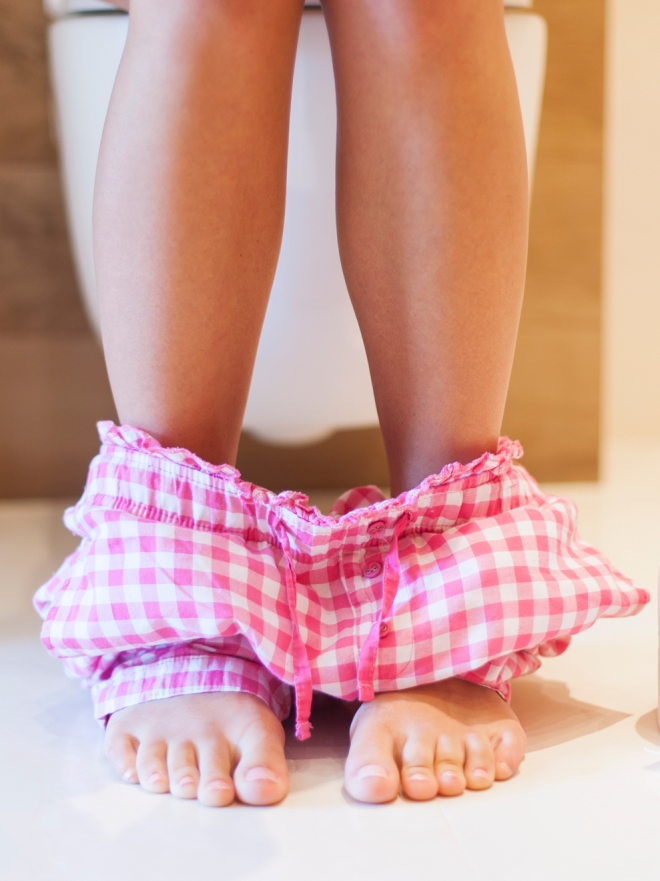 Whole-grain cereals (wheat, barley, buckwheat, oatmeal, brown rice, quinoa) and wholemeal bread are useful.
Whole-grain cereals (wheat, barley, buckwheat, oatmeal, brown rice, quinoa) and wholemeal bread are useful.
Fresh one-day kefir (it would be nice to have your own production) or yogurt based on bacterial starter culture that improves intestinal microflora - this is what you need if there are no problems with milk digestion! Use vegetable oil, avoid giving your little one black tea, cocoa, jelly, rice and semolina, pasta, fast food and other unnecessary snacks.
Some more current physiology recommendations:
-
A good habit is to have a daily bowel movement in the morning. Adjust your chair naturally. With such a ritual, life is simplified and accustoming is accelerated.
-
Massage of the abdomen (circular movements with a cam in a clockwise direction).
-
Vacuum (tummy retraction on exhalation), performed strictly on an empty stomach.
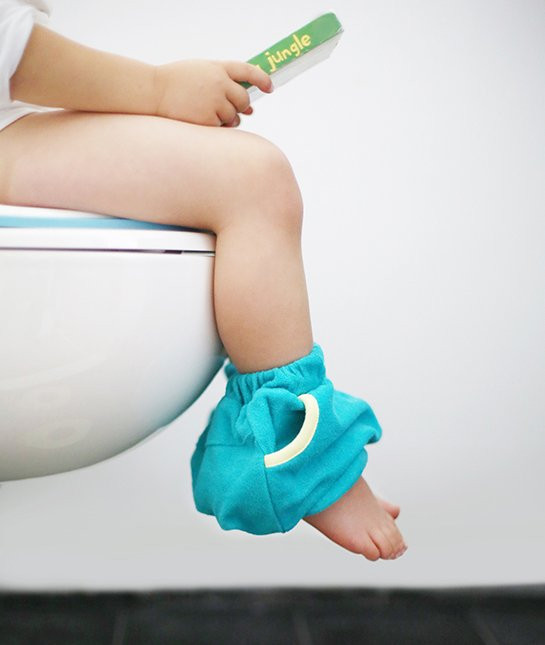
-
Enough physical activity. Squats, bends, abdominal exercises, belly dancing and more.
One of the most common mistakes parents make is to potty train their child too early. After all, only by 1.5 - 2 years he will be able to control the processes of his body. It is useless and dangerous to insist on one's own, to scold and get angry at the little one - it is so easy to harm his psyche. The usual childhood fear can develop into a problem of psychological constipation, which will have to be treated.
Pediatricians and psychologists believe that one should not focus on the toilet issue and make friends with a plastic friend. “You won’t be forced to be nice,” says folk wisdom. Everything we want to teach a kid should be presented in a playful way . We stock up on a good mood, calmly and cheerfully introduce our son (daughter) to the process of emptying through books, drawings, toys.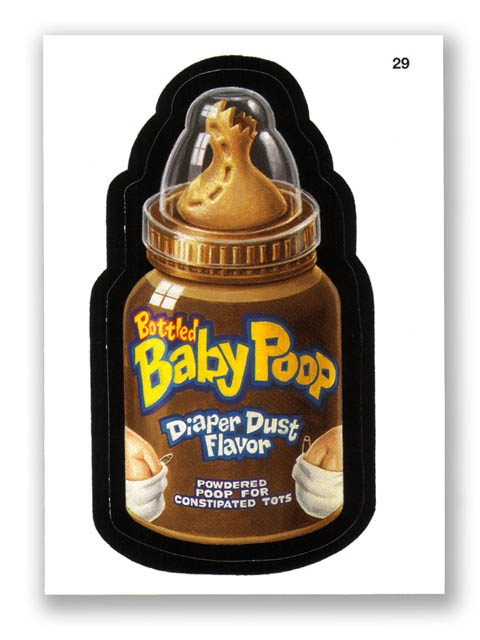
According to one mother, she and her husband came up with the idea to draw on the tummy of their son with a marker the image of the small and large intestines (as in an anatomy textbook). The little one liked it so much that he learned to poop where necessary almost immediately. True, dad and mom had to paint their tummies at the insistence of their son. Nevertheless, the goal was achieved with the least losses!
A good way to remove fear is to play a role-playing game with the child on the topic “bunny is afraid to poop”. This will allow him to scroll through - to experience the topic that excites him several times and learn the necessary information. After all, together you help the bunny overcome his fear, find a way out in a difficult situation, draw the right conclusions.
Learn to calmly respond to your child's unsuccessful attempts to urinate on the potty. Shouting, let alone shaming is unacceptable! The fact is that one fear may be joined by another - to upset parents or be punished. Why do we need a double psychological problem?!
Why do we need a double psychological problem?!
Don't panic if things go wrong with the toilet for a long time. The problem is quite common, but delicate. Provide your child with a comfortable atmosphere at home and in the kindergarten (school) as much as possible. Protect him from stress (screams, swearing, threats), from watching evil and terrible cartoons, films, programs - this is overworking.
Explain to the teacher, the nurse in the kindergarten, that it is impossible to draw attention to the “potted” topic, to criticize it too. If the little one is very shy, ask him to go to the toilet during social activities, walks or naps when no one will disturb. And don't forget about the magical power of praise and encouragement! Children are so insecure and defenseless in the world that praising them is no less important than feeding, washing, dressing. This makes it easier to deal with any problem. I wish you success!
I'm desperate! The child was afraid to poop!
- Forum
- Archive
- Child psychology and development
Every day I have the strongest stress (the child, however, also).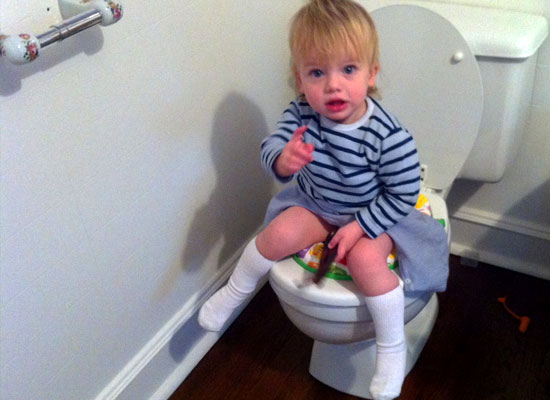 A child 3.2 once had constipation, they inserted a candle and did an enema, and after that he became wildly afraid to poop! She doesn’t want to poop anywhere: neither in a pot, nor in a toilet bowl, nor in a diaper (she has already made concessions herself), nor in shorts, nor just on the floor. As the urge approaches, he pinches his ass with all his might and runs around crying and shouting "I'm afraid!". This has been going on for more than a month, my heart is breaking, I can't see it anymore!!!! Every time she poops, as she gives birth, covered in tears, snot, sweat flows in a stream ...
A child 3.2 once had constipation, they inserted a candle and did an enema, and after that he became wildly afraid to poop! She doesn’t want to poop anywhere: neither in a pot, nor in a toilet bowl, nor in a diaper (she has already made concessions herself), nor in shorts, nor just on the floor. As the urge approaches, he pinches his ass with all his might and runs around crying and shouting "I'm afraid!". This has been going on for more than a month, my heart is breaking, I can't see it anymore!!!! Every time she poops, as she gives birth, covered in tears, snot, sweat flows in a stream ...
We've tried almost everything: suppositories, Dufalac, and vaseline oil, the neurologist says that you just need to ignore and "not notice" his fear, distract him, turn on cartoons, etc., a couple of times he is so calm sort of pooped (on the floor, taking off his pants), but then it started again ...
I know that the problem is quite common, but how can I solve it? I CAN'T see it anymore, I can't stand my nerves to look at his fear and torment-restraint.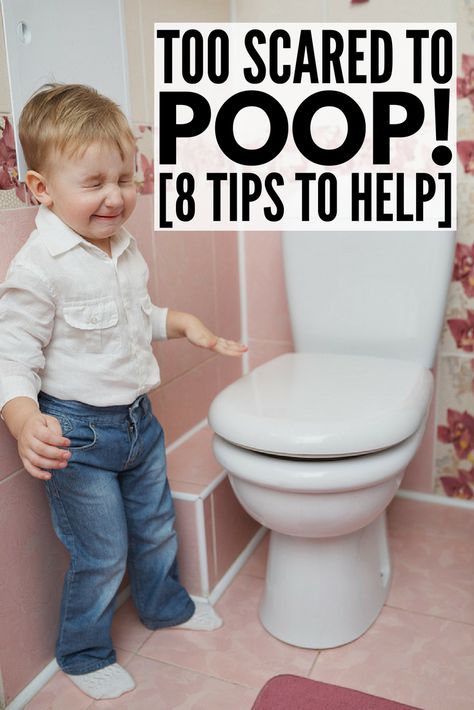
Support....please!!!
I will support you... the same thing, my son is 3 years old, and it all started with wild cries of "FEAR YOU". And so it goes on for six months. I introduced a huge amount of vegetables, I give Ayran, all kinds of apricot juices ... Duphalac ... But only Microlax candles save me, and I put it every 2-3 days. So nothing helps ... We consulted - they said it should pass, we must continue to drink Duphalac, and help the cub overcome fear, with the help of games, cartoons, distractions ... But so far to no avail. The main thing is to make sure that in any case, the baby’s intestines are cleaned every 2 days, otherwise it’s cranky ... in terms of it’s harmful for the body ... In general, in the “children’s health” section, there is a section upstairs something like “consultation on about constipation" or something like that, the doctor answers in a very detailed and accessible way. So far, nothing has really helped. Good luck...
Bottled water helped us get rid of constipation, let the child drink more often, in the morning on an empty stomach, in the evening before going to bed.
So we don’t have constipation as such, if he didn’t pinch his ass and didn’t suppress the urge, he would calmly poop, as before ... And so he endures until the poop itself crawls ... But I give water, yes , Thanks.
Sit on the toilet yourself, give him a potty and poop together, saying that this is good, useful and pleasant. Persuade by the power of your example.
we had the same thing recently from December to February, we managed - with candles - everyone praised each poop, clapped their hands happily, gave a yummy, fairy tales told that all the bad poop had long gone, and these are good, beautiful and they really need to the pot, the "bad pot" was moved, a new one, solemnly presented by grandfather, was put in its place, and candles were inserted for a week, I don't know exactly what helped, but something helped in about a week
at one time saved themselves by going to the toilet together ..I'm on the toilet, my daughter is on the potty, a bunch of books-toys with me, that is, they went, as it were, not to poop, but to sit with their mother for company (of course, on the potty, the toilet is the same).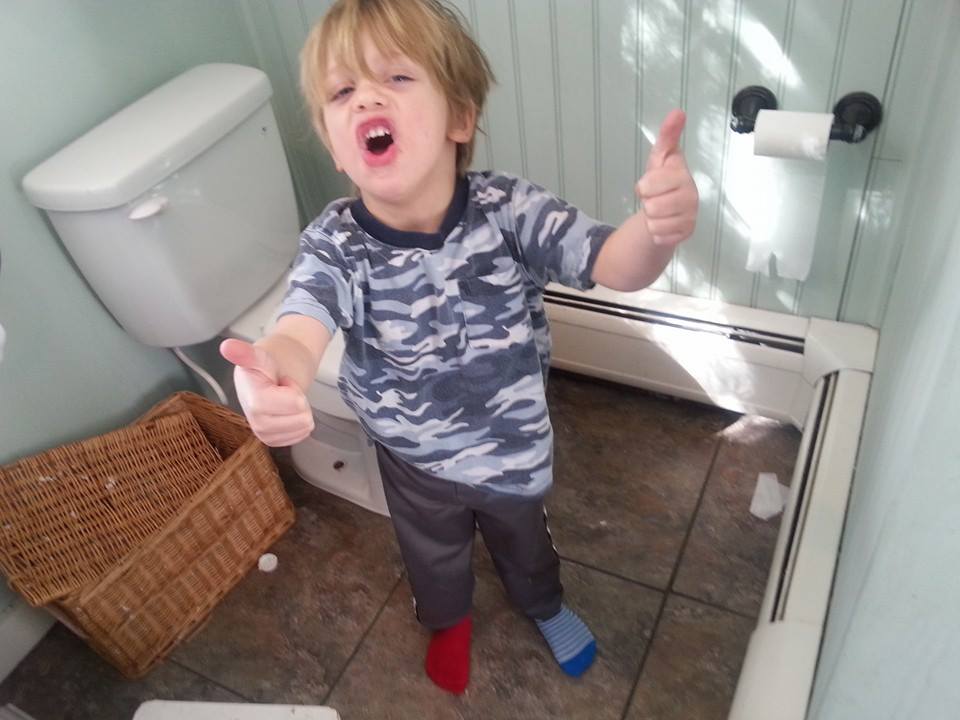 For about a month they pooped together like that, then they were just lucky, a cousin came and laughed, like big children poop alone, well, mine was seduced .. Good luck to you!
For about a month they pooped together like that, then they were just lucky, a cousin came and laughed, like big children poop alone, well, mine was seduced .. Good luck to you!
fairly common occurrence. In such cases, I usually tell the children a fairy tale about Kaku-Buku, who is offended if her priests do not let her out in time and misbehave. The full text of the fairy tale is here: http://irinapsy.ru/archives/170
And then you can lose like this, just don’t laugh: make something like a kakulka out of black, brown plasticine, better a few pieces. The cam is the butt. Well, you need a pot. Kaka knocks on the ass, but the cam does not open the door for her (does not open), Kaka is offended, lie down across, then others run around, in general, we depict constipation and voice how unpleasant it is. And then we play the scenario that Kaka knocks on the fist-ass and she immediately runs to the potty and opens the door (opens a little fist) - everyone is happy and satisfied
Usually children are delighted with such a game (because the topic is burning for them), to lose as many times as the child wants.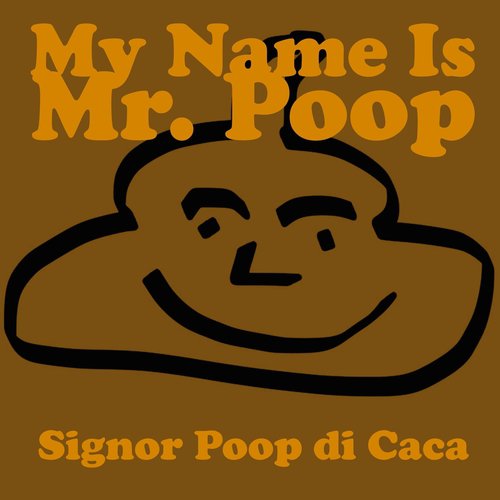
And then, if you see that the baby wants to poop, but endures, then just remind "but remember that you need to quickly let the kaku-beech out of the priests, otherwise it will be offended"
forgot to write, after the candles we switched to dufolac on the 3rd day I began to help and the need for candles disappeared)
Very rarely I write here and give advice, but after your phrase
"Every time he poops, as he gives birth, all in tears, snot, sweat flows in a stream ... " I was able to pass by, all 9 stirred in my soul0136 My daughter had the same thing, at the age of 2 to 3 years, and THIS lasted for almost a year. Nothing helped, no duphalac, no candles, no prunes, no candles, etc.
How many doctors I went around, how many tips and remedies I tried - nothing helped.
When I was already desperate, they advised me to supply Donat water (sold in pharmacies) - and a miracle happened, a day later the chair improved. As soon as the child turned out to poop on his own, the fear of this process began to go away.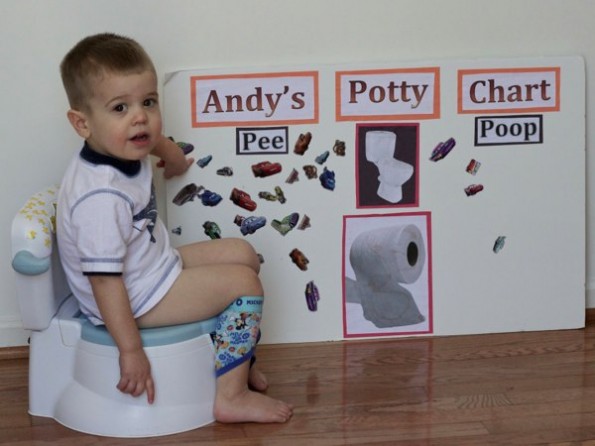 We still call Donat magic water in our family (although you can’t abuse it either, because it contains a lot of salts).
We still call Donat magic water in our family (although you can’t abuse it either, because it contains a lot of salts).
In any case, hold on, something should help your child overcome this fear, but you need patience.
By the way, summer is coming, there will be berries and fruits, I hope everything will return to normal with your son soon.
I wish this to be your last cause for despair.
Have the child sit in a warm bath for a bath. It will just work. I have a child at this age of two months, only poop like that. Then everything became normal.
as already mentioned here, go to the toilet together.
provide your child with the most fiber-enriched diet, you can supply candles with sea buckthorn, 1/2 of an adult candle.
The same thing has been going on with us for almost a year. After one constipation, a candle and an enema, my daughter just has a poop point. It seems to me that she can endure a week until her ears come out.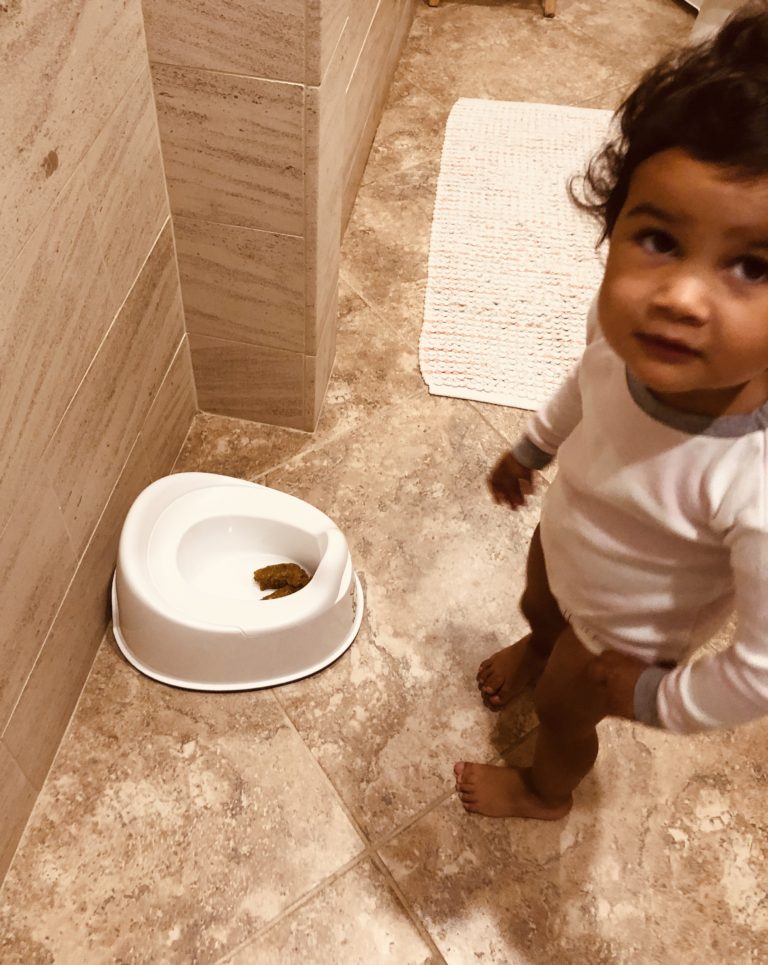 poop in any way every other day, during this we play, cartoons, books. It relaxes and everything works out, but sitting on the potty can last 40 minutes. My daughter is 3.5 years old, she only asked to poop 4 times a year.
poop in any way every other day, during this we play, cartoons, books. It relaxes and everything works out, but sitting on the potty can last 40 minutes. My daughter is 3.5 years old, she only asked to poop 4 times a year.
Dear girls, thank you for your advice and support!
I have already tried a lot, Duphalac is contraindicated for us - from him the child was generally insane all day, he was pumping out watery half a teaspoon, he ran all day, raising his pants with a cry of "I'm afraid" and restrained himself with all his might, as a result, they put Microlax, everything the child, exhausted, fell asleep on its own
Now he doesn’t sit on the potty at all, he’s afraid of him like fire
He also doesn’t poop in a warm bath, feels the urge and immediately jumps out
I was advised here that dad poop in a basin with him, I need to try.
We will also try to make poop from plasticine and buy water, maybe the truth will help ...
Thank you all again!
if you are afraid of the pot, you can try to scold and throw away the "bad pot", and go together to choose a new, good one, or just buy another one that is as different as possible.